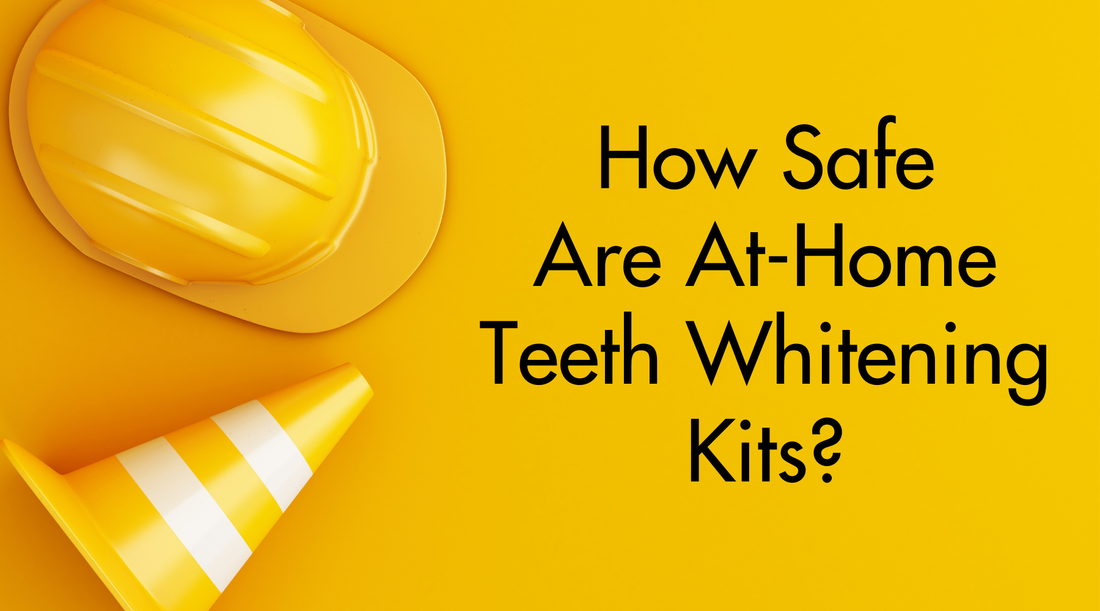
How Safe Are At-Home Teeth Whitening Kits?
Share
The Real Question: Are At-Home Whitening Kits Safe?
Everyone wants a brighter smile. The question is whether those at-home teeth whitening kits are truly safe—or just convenient. When used correctly, high-quality whitening kits can deliver stunning results safely. The key lies in understanding what’s inside the formula, how it’s applied, and who you buy it from.
At The Whitening Store, we’ve spent more than a decade testing, formulating, and refining products that whiten without compromising enamel or comfort. Let’s separate fact from fear.
Understanding the Ingredients
The Whitening Agents
Most at-home whitening kits rely on either hydrogen peroxide, carbamide peroxide, or newer PAP (phthalimidoperoxycaproic acid) formulas.
-
Hydrogen peroxide is fast-acting but can cause sensitivity if overused.
-
Carbamide peroxide breaks down more slowly, making it ideal for controlled, gradual whitening.
-
PAP+ is the latest innovation—whitening oxidatively without releasing free radicals, meaning it’s gentler on enamel and gums.
Concentration Matters
Dentists typically use 25–40% hydrogen peroxide in-office, while safe at-home kits stay between 3–16% carbamide peroxide or <1% hydrogen peroxide equivalent. Anything stronger without dental supervision is risky.
Rule of thumb: if it promises instant whitening in minutes with “extra-strong peroxide,” skip it.
Common Whitening Risks (and How to Avoid Them)
Tooth Sensitivity
Overexposure to peroxide temporarily opens enamel pores, leading to sensitivity. Using remineralizing gel or PAP-based products can help restore balance.
Gum Irritation
Improper tray fit or messy gel application can let peroxide touch soft tissue. Custom trays or pre-measured strips are safer options.
Enamel Damage
Using abrasive DIY “hacks” (like lemon and baking soda) erodes enamel permanently. Safe whitening uses chemical oxidation, not physical abrasion.
Grab our White in Minutes PAP+ Whitening Strips for gentle daily brightening without the sting.
Professional vs. At-Home Whitening: When to Choose Each
Professional whitening offers higher concentration gels and controlled exposure—perfect for deep stains or rapid results before a big event.
At-home whitening, when done with regulated products, is ideal for maintenance, gradual brightening, and convenience. Think of it as skincare for your smile: daily care keeps results radiant longer.
For the best of both worlds, our White in Minutes Pro Tray Kit is trusted by dental professionals nationwide and calibrated for safe, effective in-office treatments.
How to Whiten Safely at Home
-
Read the instructions — consistency beats intensity.
-
Start slow — use whitening 3–4 days a week before going daily.
-
Avoid staining foods — coffee, red wine, curry, dark berries.
-
Follow with remineralizing care — try our White in Minutes Remineralizing Gel to strengthen enamel and reduce sensitivity.
-
Keep results glowing with the White in Minutes Rinse—it helps prevent new stains and extends brightness between treatments.
The Science Behind Safety
Every whitening formula should pass pH balance, stability, and tooth surface microhardness tests. Studies show properly formulated PAP and low-dose peroxide gels maintain enamel hardness while effectively breaking down chromogens (the pigments that cause stains).
Authority source: PMC Study on Home Whitening Safety
Transparency is the new luxury. When brands disclose ingredients and testing, customers can make confident, informed choices.
Product Highlights
White in Minutes Home Kit
Professional-grade results from home, designed for comfort and convenience. Carbamide peroxide formula with desensitizing support. Shop Now
PAP+ Whitening Strips
Gentle, peroxide-free whitening that protects enamel and reduces sensitivity. Discover Here
Remineralizing Gel
Nourishes enamel post-whitening for strong, smooth teeth. Add to Routine
FAQs
Is at-home teeth whitening safe for sensitive teeth?
Yes, when using low-concentration or PAP-based formulas. Always follow directions and pair with remineralizing gel for added comfort.
Can I use whitening kits daily?
It depends on the product. Most safe kits are designed for daily or near-daily use, but always follow manufacturer guidelines.
What should I avoid after whitening?
Skip deeply pigmented foods or drinks for 24–48 hours—coffee, red wine, tomato sauce, and dark berries can stain open enamel pores.
How long do results last?
Results typically last 2–6 months, depending on lifestyle. Regular touch-ups and stain-resistant rinses help maintain brightness.
When should I see a professional instead?
If you have existing dental work, severe discoloration, or sensitivity that persists, consult your dentist before continuing whitening treatments.
In Conclusion
Your smile deserves both brilliance and care. Explore our collection of safe, dentist-approved whitening essentials and bring radiance home, effortlessly.
Discover the full White in Minutes collection HERE.
